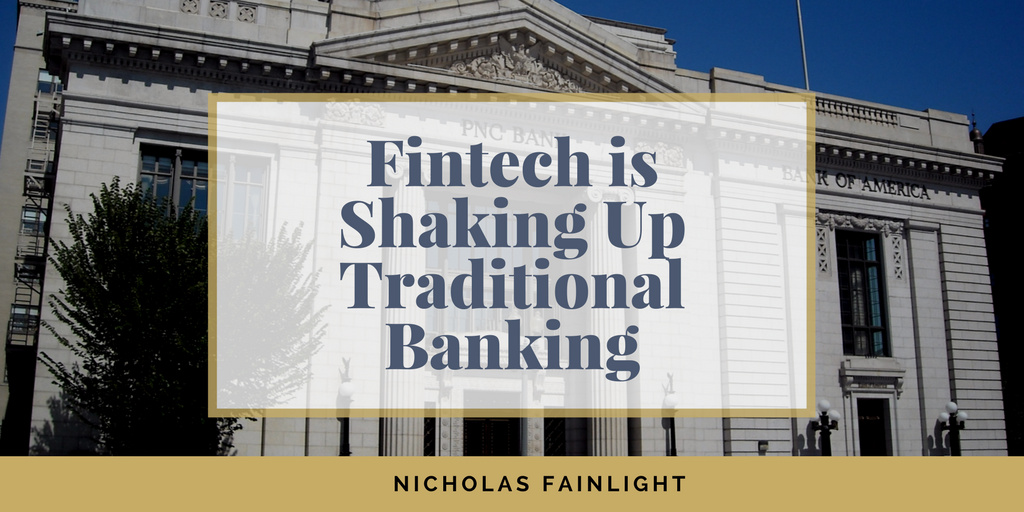There are some dire speculations in circulation that fintech (financial technology) will kill the banking industry. When you can easily and conveniently manage your finances from your phone, doing everything from investing in stocks and transferring funds, why would anyone venture out to their bank to accomplish these tasks? It’s a legitimate question, and one that has spurred many banks to reinvent their services.
For traditional brick-and-mortar banks, that means they must hop on the digital bandwagon. Fintech may be shaking up the way people manage their money, but what it comes down to is that banks will be forced to either adapt or die. According to Martin J. Geitz, president of the Connecticut Community Bankers Association, “We are now embarking on the threshold of the millennial generation driving the economy as so many are entering the workforce and their demands and tastes for products and services will really define what banks offer and other consumer-driven products.” Some banks are already making the switch to appeal to a tech-driven, online clientele, while others are slower to respond.
You may have heard of Venmo and, if you’re a millennial who’s using it, then you’ve probably already downloaded the app and use it when you go out with friends. If you haven’t yet, then your friends are probably pestering you to get it already so that it’s easier for them to pay you back. PayPal’s 2016 fourth-quarter earnings report revealed that Venmo processed $5.6 billion in payment volume, which is a 126% increase year-over-year.
Research conducted in 2015 from investment bank UBS and accountancy firm KPMG found that mobile banking is expected to more than double in the next four years, from 800 million users to 1.8 billion. While millennials may be driving some of these changes with the popularity of Venmo and other personal finance apps, fintech is not controlled by any one entity. Pretty soon, adapting new technology will become inevitable for banks that want to remain in business. Banks that are still using older, outdated systems are at risk of losing customers who can manage their finances digitally through other firms, financial experts advise.
So what then, can banks do to appeal to a changing clientele, retaining customers while opening their doors to new ones? Let’s look at the Savings Bank of Danbury in New Milford, Connecticut as an example. This bank is combining traditional banking with newer technology features to appeal to different generations. The bank has furnished their new branch with a technology lounge including smartphones, iPads, and laptops so that they can tap into online resources. Bank representatives are on hand via video conferencing, but customers no longer have to make appointments to access financial resources.
Mobile banking is also changing the landscape of banking to the extent that a new species of banks is emerging that operates entirely online. Simple is a full-service bank with zero physical locations; it represents an entirely online and mobile way to bank.
Just because all of these technological changes are coming to the banking industry does not mean that mobile banking it without flaws or universally supported; in fact, it is security concerns and a lack of intimacy that continue to hold mobile banking back. Security concerns detain one-fifth of consumers who do not currently use mobile banking, according to UBS. While banks will ultimately need to adapt to changing technology to retain relevancy, as the Savings Bank of Danbury has, banks are still a dominant and necessary force.
One thing that banks can offer that mobile banking cannot is customer service. Humans are reliable and able to account for margins of error that digital platforms cannot. Additionally, banks have been around much longer than fintech startups, so they have experience behind them. Banks do business in the trillions compared to fintech startups’ billions. Banks have the built-in ability to create credit Traditional banks store customers’ money in secure and permanently accessible accounts, and fintech startups, as they are now cannot stand alone: they rely upon bank accounts to provide their services.
To conclude, I think it’s safe to say that banks are here to stay for the time being. According to The Economist, the real risk to banks right now is not that they will die off right away, but that they will lose profitability. The banking industry, as a whole, isn’t going anywhere, but individual banks will have to rethink their offerings if they are to stay in business and remain successful.

